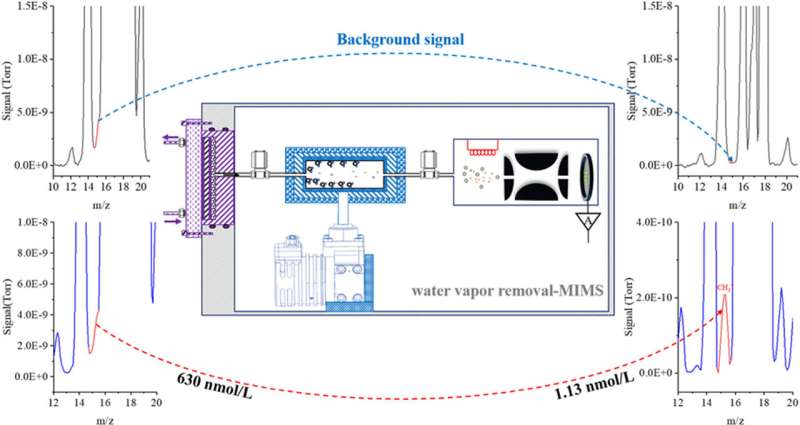This article has been reviewed according to Science X's editorial process and policies. Editors have highlighted the following attributes while ensuring the content's credibility:
fact-checked
proofread
Underwater mass spectrometry achieves 500-fold sensitivity enhancement for dissolved methane detection

A research team led by Prof. Chen Chilai from Hefei Institutes of Physical Science of Chinese Academy of Sciences, amplified the detection sensitivity of dissolved methane in water by over 500 times, surpassing 500-fold enhancement, thus reaching baseline methane detection levels in oceans and lakes.
The research was published in Talanta.
Monitoring ocean methane emissions is vital for understanding climate change and exploring clean energy sources like natural gas hydrates. However, existing data on dissolved methane in the ocean remain limited, leading to significant uncertainties in estimating oceanic methane flux due to sensitivity limitations.
While deep-sea mass spectrometry serves as a crucial tool for the rapid detection of dissolved gases in the ocean, its limited sensitivity restricts its application to specific regions or anomalous events.
In this research, the team developed a small-volume, low-power online water removal system to address challenges such as high gas content in samples and limited space in detection instruments. By optimizing the gas sampling route design and integrating it into the Intelligent Microsystem Laboratory's Underwater Mass Spectrometry (ims-UMS), they achieved a significant improvement in detection sensitivity.
The methane detection limit plummeted from above 16 nmol/L to a remarkable 0.03 nmol/L, exceeding a 500-fold enhancement.
The team's dedication to deep-sea mass spectrometry, Micro-electromechanical systems technology, and intelligent microsystem technology played a crucial role in this breakthrough.
The research team's next step will involve conducting in-situ detection studies of background methane over large spatial and temporal ranges based on this technology, as well as in-situ detection studies of directional trace gases such as H2 and He at extremely low concentrations.
This research lays an important technological foundation for further methane flux calculations, global climate research, plume tracking, and cold seep discovery, according to the team.
More information: Han Wang et al, Online water vapor removal membrane inlet mass spectrometer for high-sensitivity detection of dissolved methane, Talanta (2024). DOI: 10.1016/j.talanta.2024.125907
Provided by Hefei Institutes of Physical Science, Chinese Academy of Sciences



















